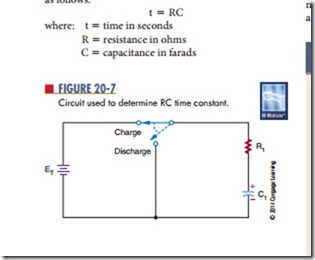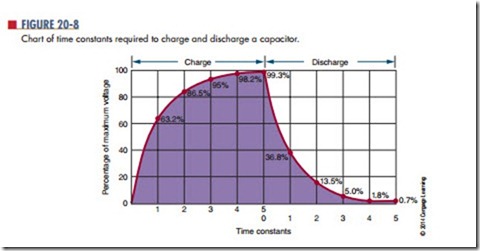rc time constants
An rc time constant reflects the relationship among time, resistance, and capacitance. An RC circuit is shown in Figure 20-7. The time it takes a capacitor to charge and discharge is directly proportional to the amount of the resistance and capacitance. The time constant reflects the time required for a capacitor to charge up to 63.2% of the applied voltage or to dis- charge down to 36.8%. The time constant is expressed as follows:
example: What is the time constant of a 1-micro- farad capacitor and a 1-megohm resistor?
The time constant is not the time required to charge or discharge a capacitor fully. Figure 20-8 shows the time constants needed to charge and discharge a capacitor. Note that it takes approximately five time constants to fully charge or discharge a capacitor.
Questions
1. What is a time constant for a capacitor?
2. How is the time constant determined for a capacitor?
3. How many time constants are required to fully charge or discharge a capacitor?
4. A 1-microfarad and a 0.1-microfarad capacitor are connected in series. What is the total capacitance for the circuit?
5. A 0.015-microfarad capacitor is charged to 25 volts. What is the voltage 25 milliseconds after placing a 2-megohm resistor across its terminals?


